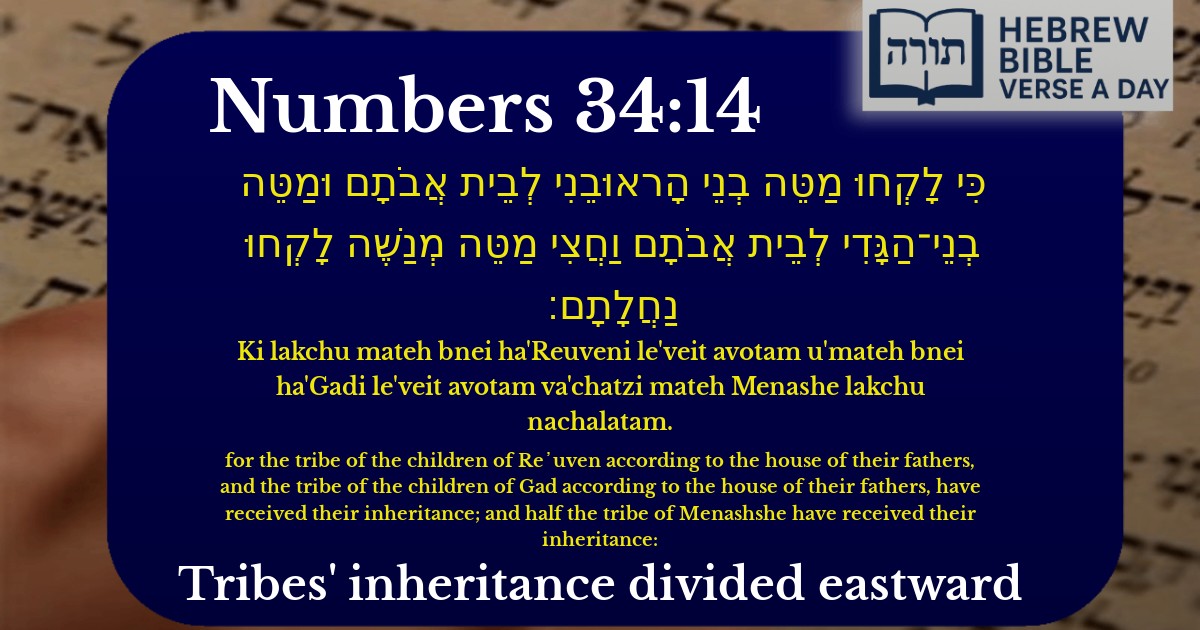Join Our Newsletter To Be Informed When New Videos Are Posted
Join the thousands of fellow Studends who rely on our videos to learn how to read the bible in Hebrew for free!
Hebrew Text
כִּי לָקְחוּ מַטֵּה בְנֵי הָראוּבֵנִי לְבֵית אֲבֹתָם וּמַטֵּה בְנֵי־הַגָּדִי לְבֵית אֲבֹתָם וַחֲצִי מַטֵּה מְנַשֶּׁה לָקְחוּ נַחֲלָתָם׃
English Translation
for the tribe of the children of Re᾽uven according to the house of their fathers, and the tribe of the children of Gad according to the house of their fathers, have received their inheritance; and half the tribe of Menashshe have received their inheritance:
Transliteration
Ki lakchu mateh bnei ha'Reuveni le'veit avotam u'mateh bnei ha'Gadi le'veit avotam va'chatzi mateh Menashe lakchu nachalatam.
Hebrew Leining Text
כִּ֣י לָקְח֞וּ מַטֵּ֨ה בְנֵ֤י הָראוּבֵנִי֙ לְבֵ֣ית אֲבֹתָ֔ם וּמַטֵּ֥ה בְנֵֽי־הַגָּדִ֖י לְבֵ֣ית אֲבֹתָ֑ם וַחֲצִי֙ מַטֵּ֣ה מְנַשֶּׁ֔ה לָקְח֖וּ נַחֲלָתָֽם׃
Parasha Commentary
📚 Talmud Citations
This verse is not quoted in the Talmud.


Inheritance of Reuven, Gad, and Half of Menashe
The verse (Bamidbar 34:14) describes the allocation of land east of the Jordan River to the tribes of Reuven, Gad, and half of Menashe. This follows their earlier request in Bamidbar 32 to settle there due to its suitability for their livestock (Rashi on Bamidbar 32:1).
Why Only Half of Menashe?
The inclusion of half of Menashe is noteworthy, as they were not part of the original request. Ramban (Bamidbar 32:33) explains that Moshe added them to strengthen the spiritual connection to Eretz Yisrael, as Menashe was descended from Yosef, who maintained his Jewish identity in Egypt. This created a bridge between the eastern tribes and the rest of Israel.
Spiritual Concerns and Tribal Unity
Lessons in Land Allocation
The Kli Yakar highlights that this teaches the principle of nachala (inheritance) being tied to ancestral houses, showing the Divine wisdom in tribal boundaries. Even when settling outside the main land, their portion remained inseparable from their tribal identity and connection to the greater nation.